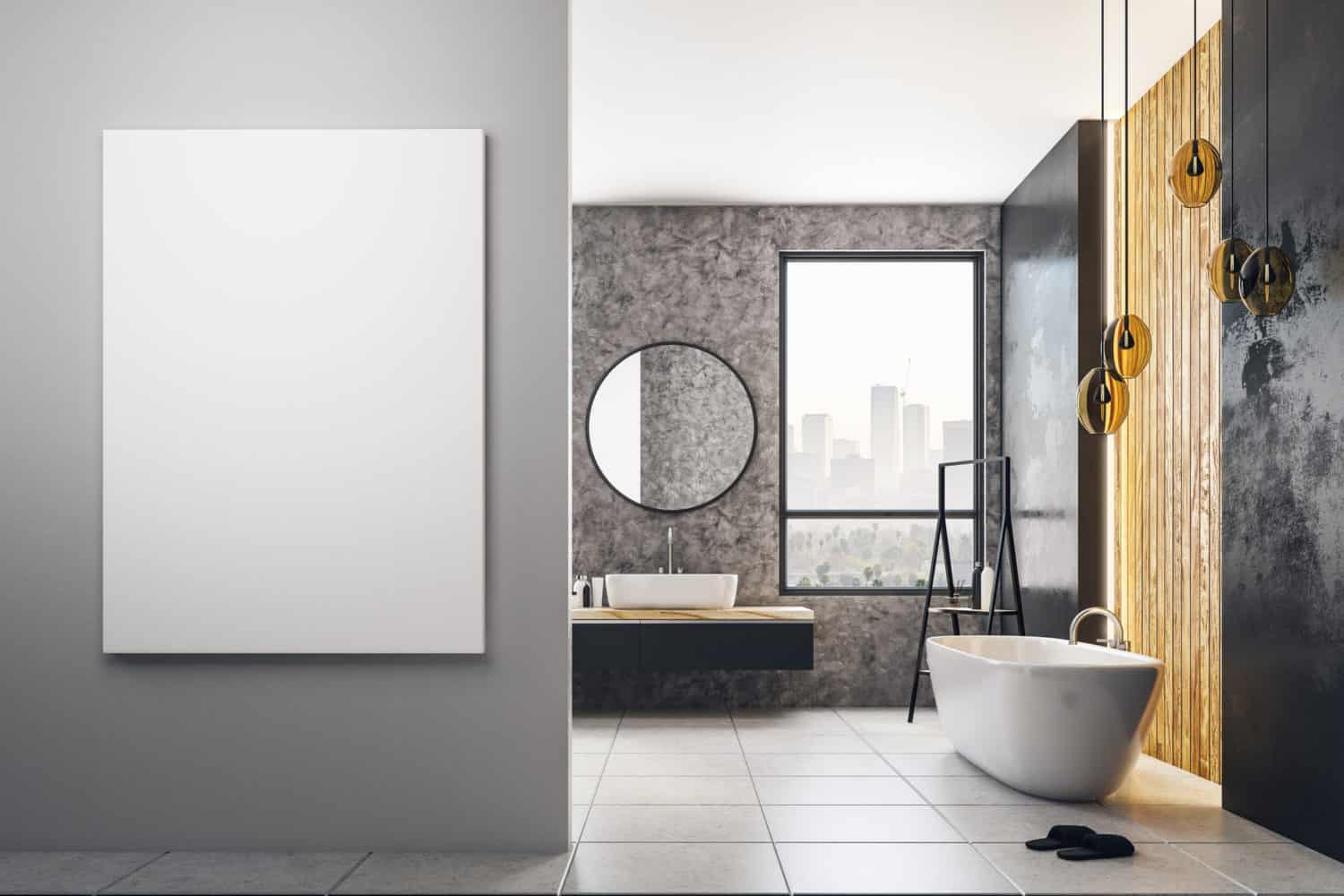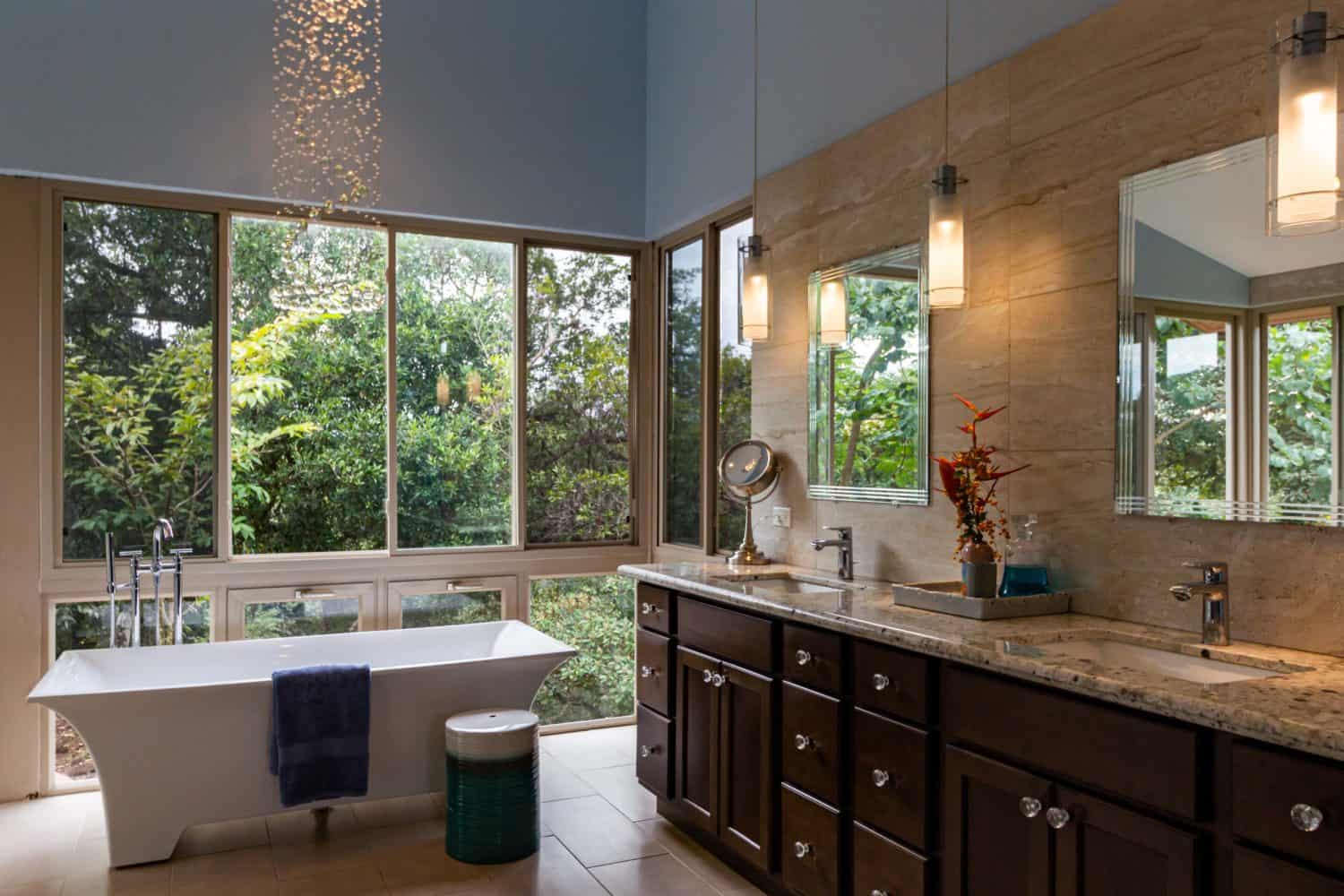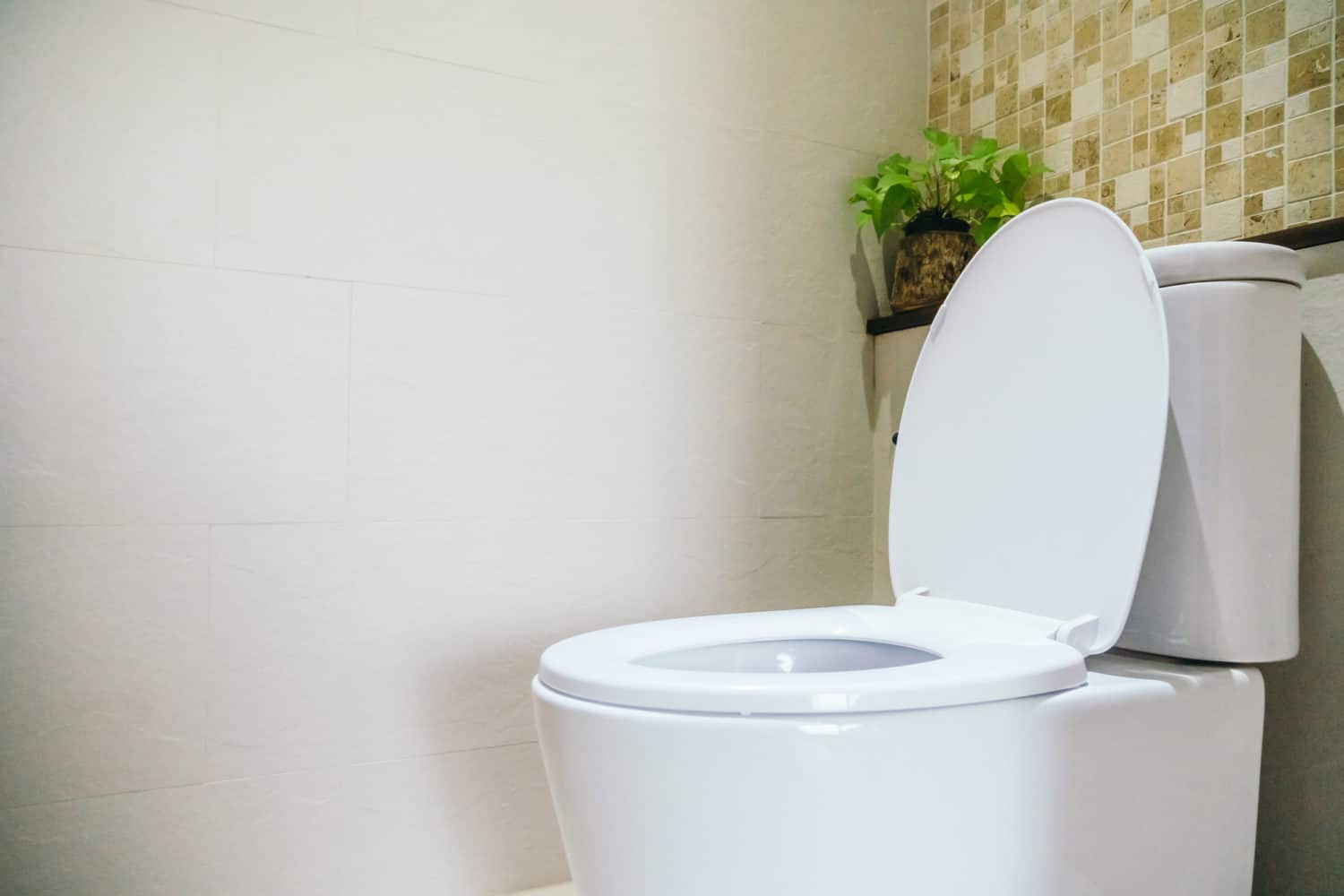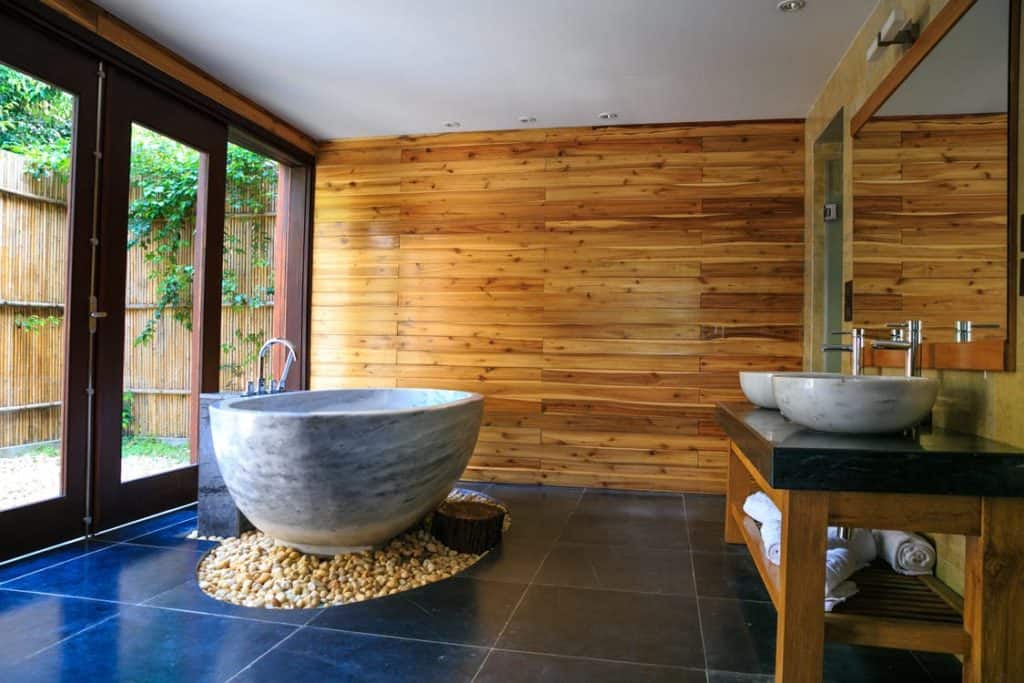Wet rooms provide an amazing way to add functionality and style to your home. Not only do they reduce maintenance and cleaning, but they also have a sleek, modern look. The appeal of your wet room can come in very handy if you ever decide to sell the house.
Nowadays, wet rooms are not reserved only for the most luxurious homes. Many people are still unsure about installing one, though. What are the advantages? How about downsides? How does one go about designing a wet room at all?
Before we move further, let’s have a small bathroom 101.
Contents
How are the Bathrooms Described?
- Quarter (0.25) Bath – Toilet, no tub, no shower, no sink.
- Half (0.5) Bath – Sink, toilet, no tub, no shower.
- Three-Quarter (0.75) Bath – Shower, toilet, sink, no tub (see my guide on how to fit a bath).
- Full Bath – Bath, shower, toilet, and sink.
- Wet Room – Depending on the flooring, either all or none of the above.
Some people think that it’s completely normal to have the toilet and the shower in the same space, no matter how tight it is. In other parts of the world, a regular home may have one full bathroom and one ½ bathroom.
Either way, home construction designs are on a constant change. These days, open-plan kitchens and en-suite master bedrooms are a standard in many homes. As they’re gaining in popularity, wet rooms may become a standard too.
What’s a Wet Room?
In the simplest of terms, a wet room is an open bathroom. In it, a clear distinction between the shower and the rest of the space does not exist. Interior designers achieve this through several styling options:
- Removing the shower tray and using uniform slabs to retile the floor
- Modifying the hand-held shower over the bathtub while making sure that the room feels open and unbroken
- Replacing the bathtub with a shower faucet
- Utilizing a glass door for the shower with the shower floor extended to the entire room
- Having no clear separation between the shower and the rest of the bathroom
By definition, a wet room is an open space with no raised portions, trays, or steps. It is waterproof and uses floor space in a more efficient way.
This makes it feel spa-like and luxurious. One of the results is an increased market value of the whole house.
The Differences Between Regular Bathrooms and Wet Rooms
Imagine a “group shower scene” that you’ve probably seen in a movie or a TV show. Now, imagine the wide-open feel of such scenes inside your own house. There’s an important difference, though – there are no loud people in towels, only you.
Here are the things that make the wet room different from conventional bathrooms:
- Its shape can be an irregular one – forget about plain rectangles.
- From floor to ceiling, a wet room is completely waterproof.
- The floor continues uninterrupted throughout the room. There are no steps to climb over.
- To avoid flooding, the floor of the wet room slopes towards the drain.
- There are no shower doors or trays. You can, however, install a partial glass partition.
- You can have a tub inside the wet room, but typically, there’s just a shower.
Why Would I Want a Wet Room?
As you probably already know, the population of our planet is changing. There’s a lot of old people, some of whom live with their kids and grandkids. On the other hand, many of them live independently. They want to move around their homes as easily as possible.
Having an older member of the family move to your home may call for a refurbishment. When it comes to bathrooms, this translates to easier access. A wet room is very beneficial in this regard.
On the other hand, many young adults delay their marriages and live in single-person units. The expense of renting alone leads many young people to rent small apartments. A good way to make a small apartment feel cozier is to have a wet room in it.
Some people think that having a wet room means more accidents and leaks. However, the technology behind these bathrooms makes them safer than the traditional ones.
Unlike conventional bathrooms, wet rooms have no separate sections. Everything is one big shower. By using a process called tanking, a wet room is thoroughly waterproofed. The result of this is the entire room impermeable to water damage and leaks.
Are Wet Rooms Expensive?
The cost of wet room installation depends upon its size. However, in most cases, the price fluctuates between £1,500 ($1,850) and £4,000 ($4,900). This includes all the fittings and fixtures.
An important thing to keep in mind here is that quality should be put over the cost. If the drainage and tanking are poorly installed, repairing the inevitable damage is bound to cost you more in the long run.
Wet Room Advantages
Are you trying to persuade your husband or wife to refurbish your bathroom into a wet room? If yes, you’re in luck – wet rooms introduce a plethora of benefits. Here are some of them:
- Comprehensive wet room kits are widely available. This turns the bathroom restoration process into a piece of cake. What’s more, you can use YouTube videos for instructions. However, for a fantastic end result and complete peace of mind, hiring an experienced professional installer is recommended.
- Having less storage space in a wet room means less bathroom clutter.
- For refurbishment, you’ll be using premium, waterproof paving options. As you can already guess, these will easily raise the value of your entire home.
- Besides being practical, these types of bathrooms provide an undeniable wow-factor. Their open design, minimalist fixtures, and ceiling tiling ooze with contemporary elegance.
- For older people, wet rooms are more accessible than conventional bathrooms. This is because wet rooms have no shower trays.
- The whole space of a wet room is very easy to clean. The wide-open style of a wet room allows the steam to spread farther along the floor and walls.
- Converting a bathroom into a wet room is a good way to give the house a new feel. This is particularly helpful with flipped foreclosures or old, inherited houses.
- Increased durability is another advantage. Wet rooms are extremely resistant to leaks and moisture damage thanks to their waterproof nature. Besides requiring less maintenance, wet rooms save a lot of time and money in the long run.
Wet Room Disadvantages
In the case of wet rooms, the number of advantages significantly outweighs the number of downsides.
- Waterproofing a whole room isn’t cheap.
- These types of bathrooms use more water, which leads to higher water bills.
- A wide-open bathroom space can cause some people to feel disoriented.
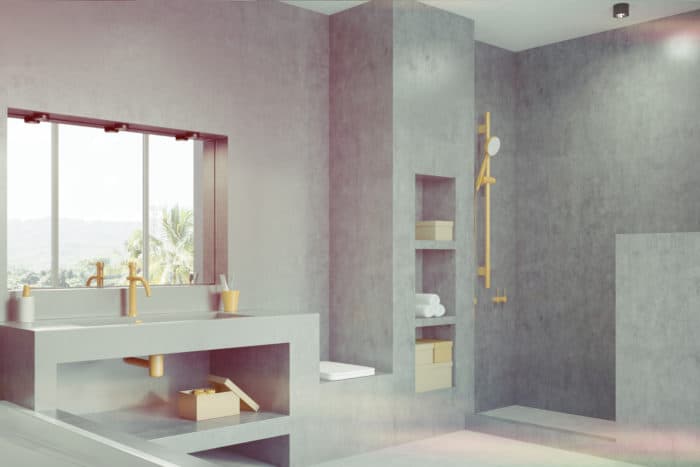
Factors to Keep in Mind When Installing a Wet Room
Deciding to switch from a regular bathroom to a wet room is not easy. Every plumber will try to sell you on how quickly can everything be done, though. However, there are still several important factors you need to keep in mind:
- While it can be installed on the upper floors, a wet room will cause your water volumes to rise. For that matter, periodically check the house’s drainage. You’ll need to make sure if it can handle the excess water.
- Installing a wet room typically involves inspection and clearing of gutters and drains.
- As we already mentioned, the common characteristic of wet rooms is a large, open space. Therefore, go for space-saving fixtures. A dual shower head built into the ceiling and hidden piping will make the room feel even more open.
- Another common trait of the wet rooms is their minimal design. Opt for metallics and chromes that fit into the aesthetics of sauna-like bathrooms.
- Those who want extra luxury should consider installing recessed lighting and thermal flooring. These go behind floor panels and walls.
- The wide-open design means you should eliminate cabinets, vanities, and drawers. For storage, go with recessed shelves for bathrooms.
- Removing all bath linens is also recommended. These include toilet paper, washcloths, towels, and similar items. The reason is very simple – these items get damp and can cause the spread of mildew and mold.
- Having a gradient floor is important, but the slope needs to be subtle. Otherwise, it may disorient older residents and children.
- The type of tiles you decide to go with need to be designed specifically for bathroom use. In other words, the tiles need to have low-slip properties and longer-lasting seals.
- While it does need to be free and open, a wet room should also be safe. Consider installing grab bars and hand grips. Don’t forget that a wet room is steamy and moist – having something to hold on to can be very comforting.
How to Make a Wet Room Fully Waterproof
Conventional bathrooms use tile and stone. These elements are easy to clean, resistant to moisture, and have an attractive look.
However, such paving options have to be installed onto a substrate, where they will be held in place by grout. In other words, water can seep through them and cause damage to anything below.
Basically, a wet room can be made out of any type of flooring. These include PVC, tiles, and stone. However, it is of crucial importance to ensure that it’s completely waterproof. Regardless of the bathroom’s location, the water needs to be prevented from slipping through the surface.
In regular bathrooms, bathtubs are made of fiberglass, porcelain, or other waterproof materials. Shower trays, toilets, and sinks are usually made from the same materials. While the walls and floors get only occasional spills, the bathroom fixtures handle almost all of the water.
Walls and floors never stay submerged for long. In addition, the surface moisture is relatively low in volume. However, things are a bit different when you have a wet room.
In a wet room, the entire floor gets submerged when you’re taking a shower. Furthermore, the steam will coat the walls – there are no curtains or doors to stop it from doing so.
Therefore, a wet room has to be tiled from top to bottom. In many cases, the ceiling needs to be tiled as well. Beneath the tiles, coats of waterproof gel membranes and primers need to be applied. Laying the tiles on such a layer makes the surface impermeable.
Materials That are Safe to Use in Wet Rooms
The most crucial part of every wet room is the waterproof substrate. Once this layer is installed, any water-friendly material can be used. Of course, this leaves out wood. If you really want wooden elements in your wet room, use ceramic tiles with wood patterns.
The rule of the thumb goes like this: if it can be used for poolside paving, it can be used for wet rooms as well. This is because pool coping is designed to resist consistent submersion, random splashes, chlorine, and salt. With the exception of chlorine, all of these occur in the wet room.
One of the most popular choices is natural stone. The fact that this material is porous is taken care of through tanking. However, excess water getting inside the pores can still cause issues in the long run. Frequent sealing solves this problem, but it also brings an extra cost.
Protecting the Rest of the House
Unlike the wet room, the rest of your home is not waterproof. In other words, it’s important for the water to stay where it should be – inside the wet room. This can be solved by raising the doorstep, i.e. the separator that signifies the wet room’s entrance.
However, this isn’t the best decision if you want the wet room to be more accessible to older residents. In such cases, a raised doorstep can easily turn into a problem for their mobility. Furthermore, don’t forget that wet rooms require more water – make sure to update your insurance.
The installation of wet room kits rarely takes more than a day. The entire process should not disrupt the rest of your home. In other words, wet room conversion stands as one of the quickest and easiest ways to upgrade your old bathroom.
Hand-Held Faucet – a Worthwhile Investment
Many people enjoy taking a shower due to the water’s temperature and pressure.
However, when you’re taking a shower in the wet room, the hot water splashing everywhere around can be quite overwhelming. If your wet room is large, you may also feel exposed. A wet toilet seat is an additional downside. Read the difference between wood vs plastic toilet seat.
To enhance the experience of taking a shower in the wet room, consider installing additional water jets. These can be installed in the shower walls, each of them at a different level. However, doing this will probably require the installation of a partial glass door, too.
A hand-held shower seems to be the best solution. With it, one has more control over the water flow and can direct it at will. Moreover, these can be of great help when you’re cleaning the wet room.
Another helpful idea would be to install a waterproof exhaust fan. When coupled with underfloor heating, these appliances quickly dry the wet room and enhance hygiene.
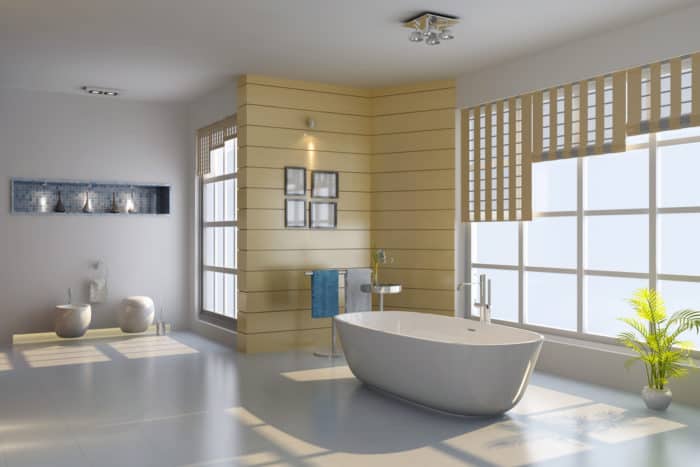
A Wet Room with a Bathtub
Those who really love their bathtubs don’t have to part with them if they’re making the switch to a wet room. For continuity of the design, pave your bathtub in a way that matches the wet room’s style. In cases of corner tubs that are built into walls, pulling them out and replacing them with freestanding tubs is recommended.
A standalone bathtub allows maintaining a uniform floor level and creates more space. These are the prominent elements of every wet room. Furthermore, freestanding bathtubs can be cleaned all-around, decreasing the chances of mildew or mold.
The showerhead can be positioned so that it drains into the bathtub. This can be done with both fixed and portable showerheads. Installing a couple of parallel showerheads is an even better idea – it’s something that can greatly enhance the whole bathing experience.
Conclusion
As you can see from the above, there are a lot of reasons to make a switch to a wet room. These types of bathrooms are a great solution. Not only do they add both style and functionality to one’s home, but they also provide a number of other advantages.
The sleek modern look of wet rooms is a dealbreaker for many homeowners. If you’re someone who loves minimalism and a contemporary look above everything else, the wet room is your ideal option. Increased property value is an added bonus.
However, the sheer number of practical benefits is the main selling point of wet rooms. These bathrooms are more accessible to the elderly. They are easy to keep clean, while their incredible durability saves a lot of money in the long run.
So, should you install a wet room? Only you know the answer. Refurbishing a traditional bathroom into a wet room is a big decision and not one you should make lightly. If you do decide to go for it, you are bound to end up with a contemporary bathroom solution with a sleek, stylish design.
If you plan on upgrading your bathroom, check out my post on vanity cabinets as well.
